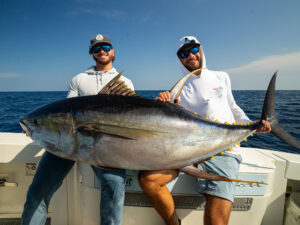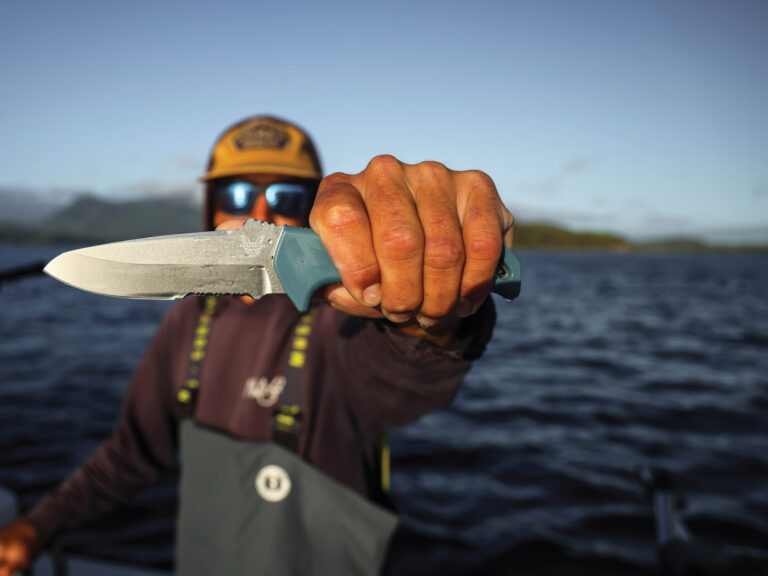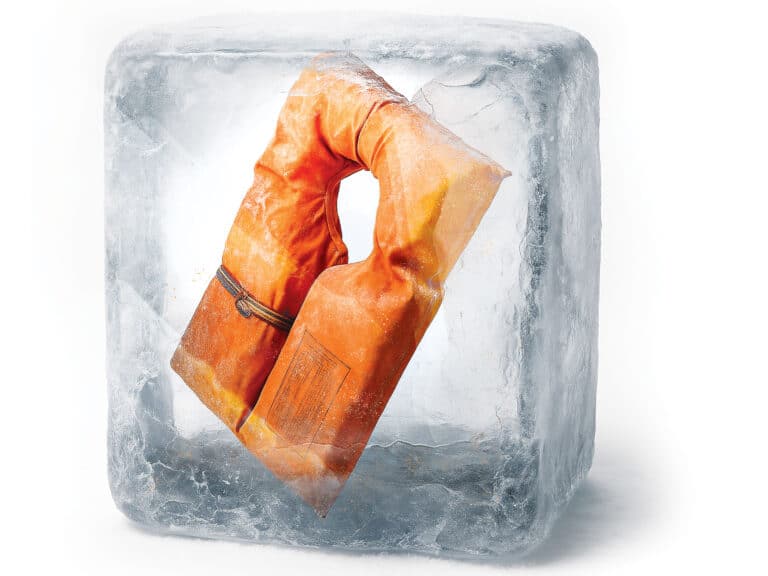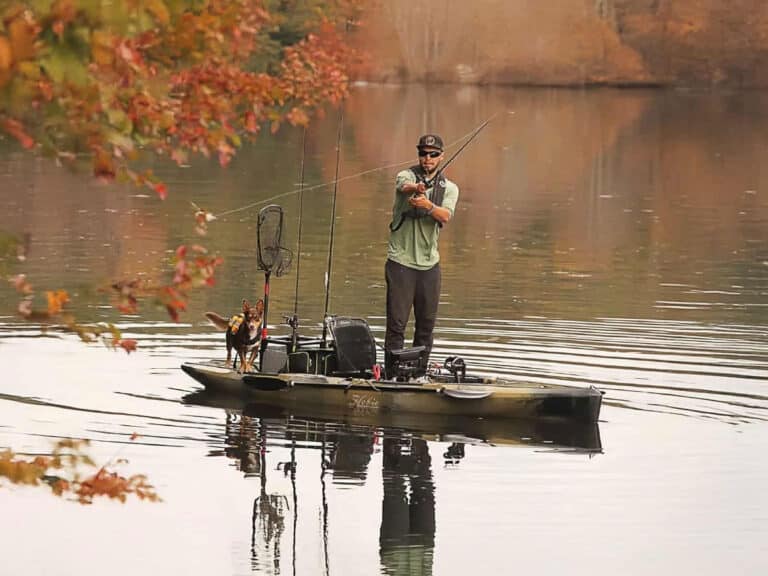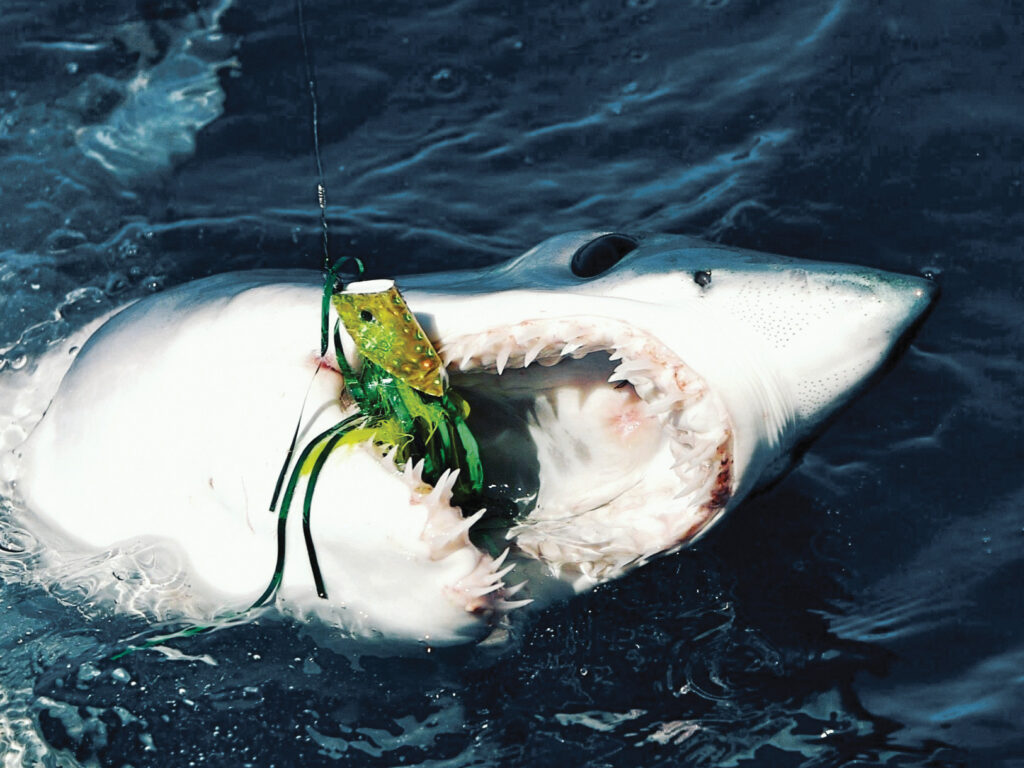
June kicks off the best big-game fishing of the year. From the Atlantic canyons to the Gulf oil rigs and California coast, tuna, blue marlin, swordfish and sharks rule the blue water. Before you go, get your head right—going toe-to-toe with a sea monster is a lopsided battle in the fish’s favor.
Makos on the Fly
San Diego native Capt. Conway Bowman says fly-fishing for sharks is better than ever. “The last five years, the makos have been getting bigger and bigger,” he says. Last year, Bowman’s anglers hooked 17 makos that he estimates weighed between 500 to 800 pounds. To catch makos on the fly, Bowman finds structure and current within a few miles of the beach. Then he chums and drifts. He describes the experience as “hours of boredom interrupted by sheer terror.” Anglers use custom 14-weight rods and huge popper flies. “A giant shark will rise to the fly like a brown trout on a hopper,” he says. Beating a 500-pound mako with a fly rod is almost impossible. “Once I get a couple of jumps out of the fish, I break the line,” Bowman says. The fly usually floats to the surface for recovery. Big makos are off Southern California from April to October.
Ticket to Tuna Town
Capt. Josh Bodenheimer, of tunatownfishing.com, considers early summer the beginning of Louisiana’s best tuna fishing. “We have action on 60- to 80-pound yellowfin, with bigger fish mixed in,” he says. Bodenheimer starts the day catching menhaden in a cast net. Once he has 200 to 300 baits, he heads to the offshore oil platforms. “Late spring, the fish are in 1,000 feet of water about 30 miles from shore,” he says. When he marks tuna on his fish finder, Bodenheimer deploys live baits on stand-up rods. “We get the fish riled up behind the boat, and it’s common to have several on at once.”
Hatteras Blues
Late spring into early summer is the best time for blue marlin off Hatteras Inlet, North Carolina. Capt. Rom Whitaker, of hatteras release.com, points to statistics from last year’s Hatteras Village Offshore Open, when 69 boats released 48 blue marlin and weighed four fish up to 547 pounds. “That compares to any blue marlin tournament in the world,” he says. To find blue marlin, Whitaker looks at sea-surface-temperature images for eddies of warm water along the Gulf Stream. “I like to fish the north side of the eddy,” he says. He looks for the eddy to cross structure south to southeast of Hatteras Inlet. “I start trolling in 80 to 100 fathoms and work my way as deep as 1,000 fathoms,” he says. To cover water efficiently, Whitaker pulls lures at 5 to 10 knots, making constant adjustments. When it’s right, he expects to encounter two to four marlin a day.
Southern Sword Fights
Off Miami, Capt. Russell Kleppinger catches swordfish with a fly rod. To accomplish this feat, he trolls teasers at night. When a swordfish knocks the line out of the outrigger clip, he pulls the teasers and casts a fly. On his first attempt, Kleppinger released an estimated 200-pound sword. Now he’s excited to introduce other anglers to the challenge. He laughs, “I always find a way to make fishing more fun.” Kleppinger also targets swordfish with light tackle during the day. He uses a 30-pound-class stand-up combo and 20-pound-test braid to drop bait to the bottom in more than 1,000 feet. With an electric reel as a downrigger, he attaches a heavy breakaway sinker to the main line with light mono that breaks on the bite. He has landed swordfish up to 400 pounds with the system.




